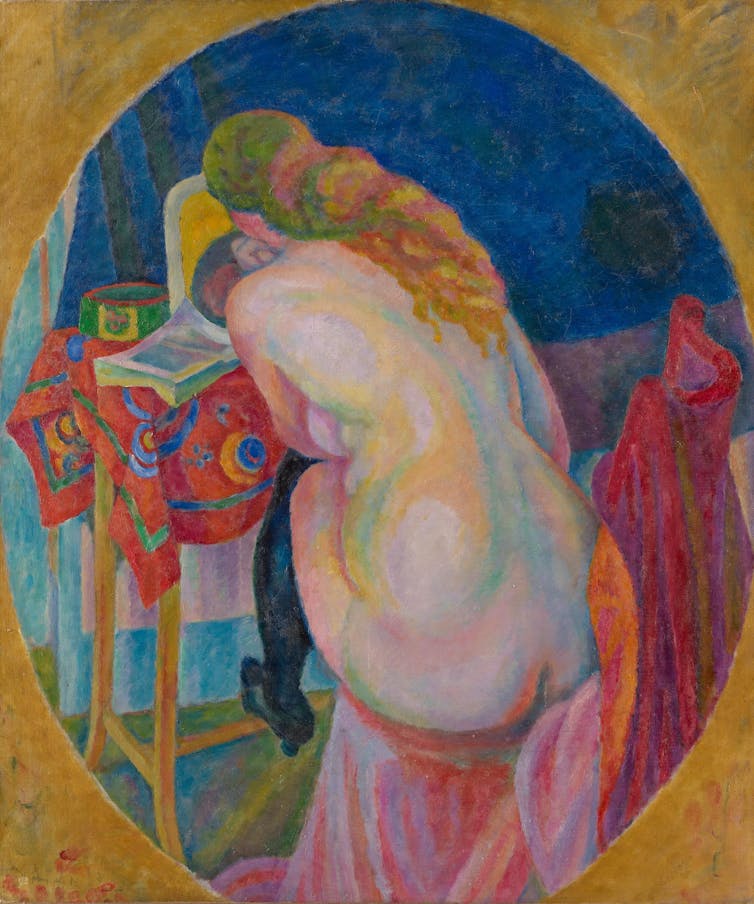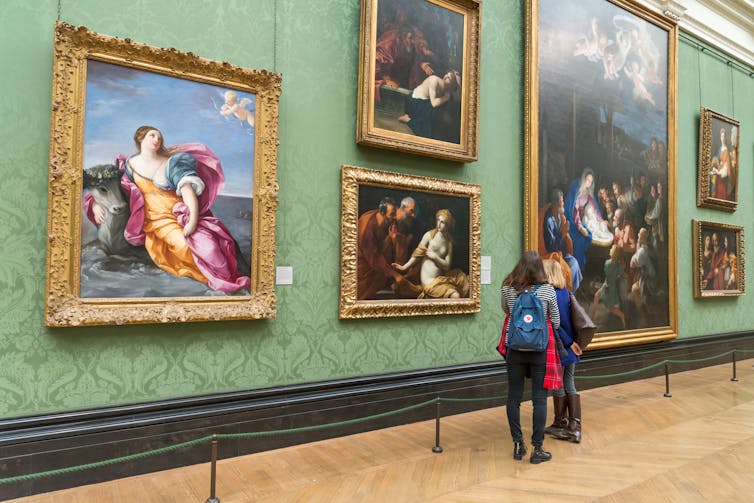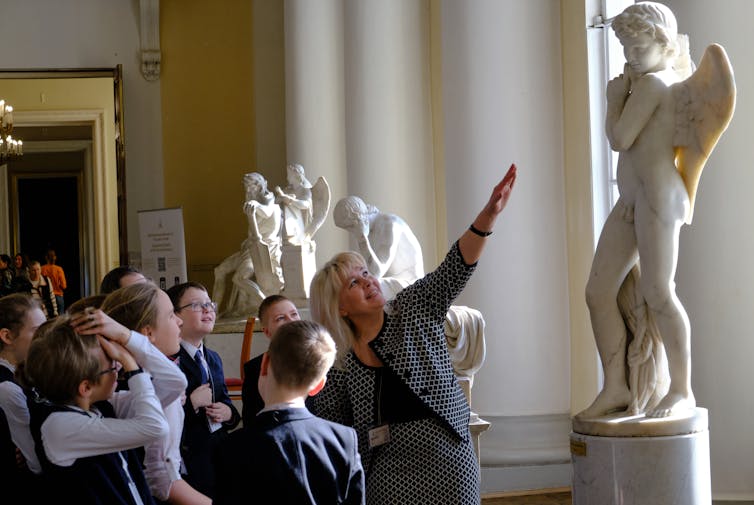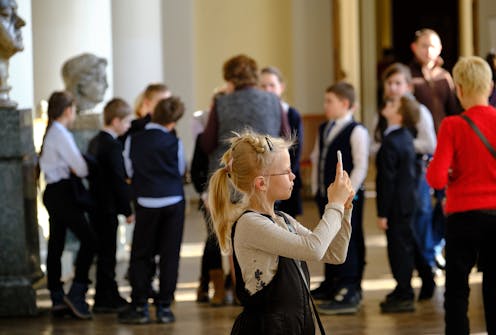Source: The Conversation (Au and NZ) – By Naomi Zouwer, Visual Artist and Lecturer in Teacher Education, University of Canberra
Art offers us different, and sometimes challenging, perspectives to consider in our lifelong relationship with the human form.
Since they were babes in arms I have taken my two children to museums and galleries. Because of this frequent exposure to art, seeing representations of nude bodies is normal for them.
But if this is not your experience with the little people in your life, you might be wondering where you might start to talk about nudity and art.
Nudity in art can stimulate meaningful and necessary conversations about all sorts of topics, from what different bodies look like, to body image, to what it means to be human.
Here are some questions your children might have about the bodies they’re seeing – and some tips and resources to help you answer them.
What are we going to see at the gallery?
Art galleries provide opportunities for parents, carers and educators to have deep discussions with children about history, politics, the environment – the list goes on.

National Gallery of Victoria, Melbourne, CC BY-NC
As well as coming across new and sometimes challenging concepts, the art gallery can also be a place where children may be confronted with unclothed bodies in a public space for the first time. It’s understandable this might provoke a nervous giggle or gasp.
The Gallery of Greater Victoria suggests before you visit, show your child some of the works they will see to help them prepare and talk about the tradition of nudes in art and what they can symbolise, such as privacy, innocence, bravery and vulnerability.
Why is that giant pregnant lady not wearing any clothes?
Art can help us empathise with other people’s perspectives. As a high school art teacher I took a group of students for an excursion to the National Gallery of Australia.
The first artwork we stopped at was Ron Mueck’s monumental and hyper-real sculpture Pregnant Woman (2002). I was heavily pregnant at the time and noticed the students looking at me and then the sculpture and back to me again and then quickly looking away, maybe a little embarrassed (or maybe I was).
It was a funny moment and offered an excellent opportunity to talk about what being pregnant feels like and how art can express emotions and make us think about other people’s perspectives.
Mueck’s Pregnant Woman is currently on display at the Maitland City Art Gallery, and throughout the year the work will interact with their collection and exhibitions, curated to foster “different conversations and ideas to emerge related to family (in all its diverse forms), motherhood, birth and the marvel of humanity”.
Why are there so many nude bodies in the gallery?
The human form has been a subject of art throughout history.
Exploring the history of nudes in art reveals how past societies have shaped our current self-perceptions. Galleries provide an excellent opportunity to see how different cultures and eras have viewed the human body.

Alex Segre/Shutterstock
Why did the artist choose to make a work like that?
Head of National Learning Georgia Close from the National Gallery of Australia told me:
It’s important to have conversations about nudity and representation in artwork. Bringing it back to the artist’s words is always a useful strategy to provide cultural or conceptual context, and seeing what students think about what the artist has said.
Model researching the artist’s intentions, read the label or artist statement, find the artist speaking about their work on the internet, show your child how finding out the story behind the artwork can help to understand it better.
For example, artist Patricia Piccinini says:
My practice is focused on bodies and relationships; the relationships between people and other creatures, between people and our bodies, between creatures and the environment, between the artificial and the natural.
Viewing Piccinini’s work with this statement in mind brings an informed understanding of her artistic intentions.
What is that?!
Walking through the gallery can become a fun anatomy lesson.
When asked how is it best to respond to children when they are curious about bodies they see in the gallery, lecturer in educational psychology and clinical neuropsychologist Karen Oakley says:
the key thing I would discuss would be appropriate labelling of the parts of the human body, talking about bodies, how they look, how they change, and with whom and when it is OK to be naked.

Akimov Igor/Shutterstock
If this raises further questions about puberty, body image or more challenging topics, Raising Children has a range of resources and age-appropriate strategies that can help you talk to your children.
Visual arts can be challenging. Like other forms of art, such as writing or film, sometimes works are not intended or suitable for children. This is why it’s good to research your trip before you go, or talk to gallery staff for guidance on the collection.
Art can help us explore complex topics with our children and gain insights into what they are thinking, ourselves and the wider world.
![]()
Naomi Zouwer does not work for, consult, own shares in or receive funding from any company or organisation that would benefit from this article, and has disclosed no relevant affiliations beyond their academic appointment.
– ref. How to talk to your kids about nude art at the gallery – https://theconversation.com/how-to-talk-to-your-kids-about-nude-art-at-the-gallery-231815









